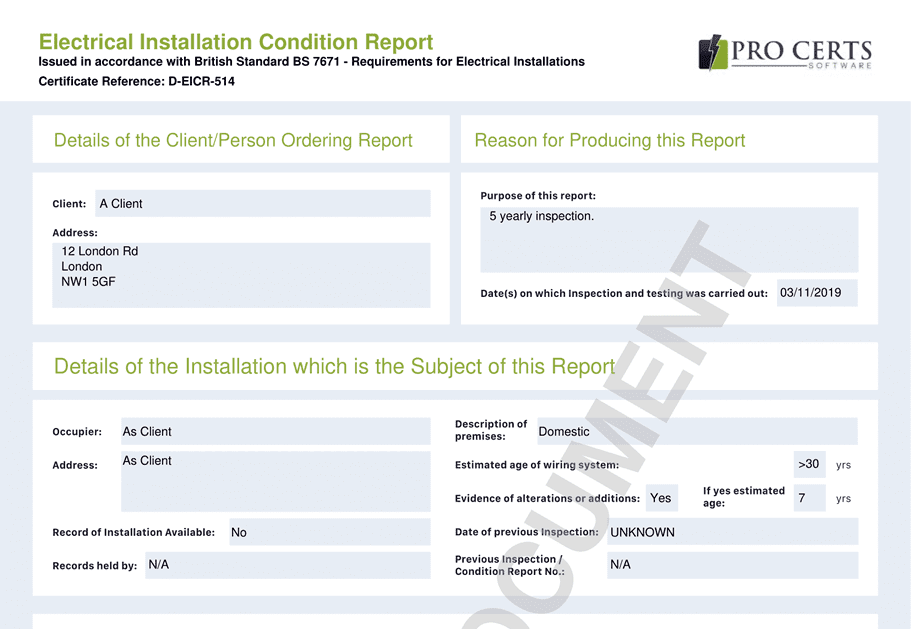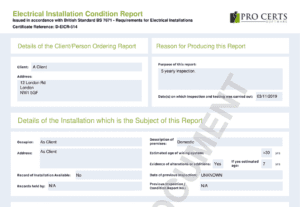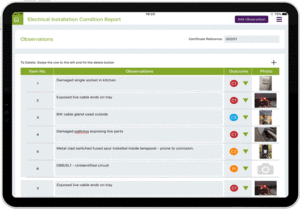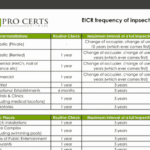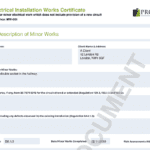Do I need an Electrical Installation Condition Report?
The short answer is yes, you require an Electrical Installation Condition Report for various reasons, including the following:
BS 7671 IET Wiring Regulations, Section 652 states:
The frequency of periodic inspecting and testing of an installation shall be determined having regard to the type of installation and equipment, its use and operation. . .
IET Guidance Note 3 Section 3.7, Table 3.2 offers guidance on the “maximum duration” between inspections, the inspector may specify a duration lower than that shown in Guidance Note 3, the inspectors decision is influenced by the age and current condition of the electrical installation.
Buildings Insurance: Many insurance companies may specify that a “Satisfactory” Electrical Installation Condition Report is obtained as per the terms and conditions of their insurance cover policy.
The Electricity at Work Regulations 1989: The purpose of this guidance is to highlight what can be done by duty holders to achieve electrical safety compliance with the duties imposed by the Regulations. For further information see The Electricity at Work Regulations 1989 Guidance. from the Health & Safety Executive.
Health and Safety at Work etc Act 1974: An Act to make further provision for securing the health, safety and welfare of persons at work, for protecting others against risks to health or safety in connection with the activities of persons at work…
The Electrical Safety Standards in the Private Rented Sector (England) Regulations 2020: These Regulations may be cited as the Electrical Safety Standards in the Private Rented Sector (England) Regulations 2020, these Regulations came into force on 1st June 2020. For further information see UK Statutory Instruments 2020 No. 312
Mortgage Surveyor: A mortgage surveyor or lender may request that an Electrical Installation Condition Report is carried out. Many mortgage companies like to ensure the property they are lending on is electrically safe and the risk of the building catching fire due to faulty electrics is low.
Property Purchase: If you are looking to purchase a property, be that a commercial, industrial or a domestic property, it is in your best interest to get an Electrical Installation Condition Report carried out first.
Failure to have an EICR carried out could result in you purchasing a property which is in need of an expensive full rewire or extensive remedial works. To put it this way, would you purchase a car without an an MOT? probably not.
